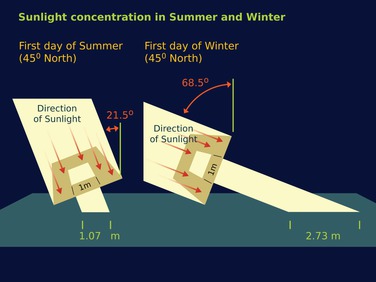The 23.5 degree tilt in Earth's axis creates the seasons. Earth spins on its axis once a day—think of the axis as an imaginary line that runs from the north pole to the south pole of Earth, extending out into space, like a toothpick poking through an olive. As Earth rotates, roughly half of it is in daylight and on the other half it is nighttime.
Because Earth's axis is not pointing straight up, it means that at certain times of the year, Earth's north pole is leaning toward the sun and at other times it's leaning away. That accounts for a large difference in how light from the sun hits Earth's surface.
Light rays hitting the surface of Earth straight on are more powerful and heat the surface to a greater degree. Light rays coming in at a shallower angle are less powerful and create less heat. During the summer in the Northern Hemisphere, the north pole is pointed more directly toward the sun, while in the winter it points farther away.
Humans have adopted a convention of four seasons on Earth and there are astronomical events that suggest that four is the right number. There are four moments—or points—along the course of Earth's yearly orbit around the sun that signify seasonal changes.
